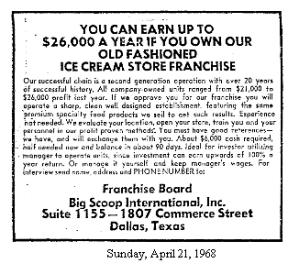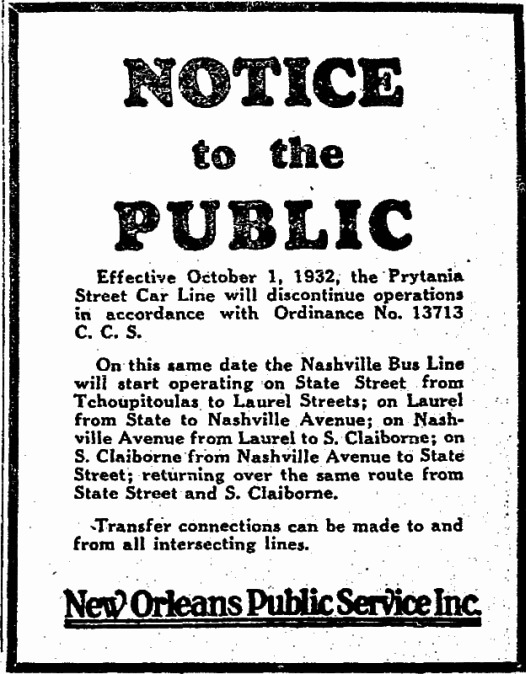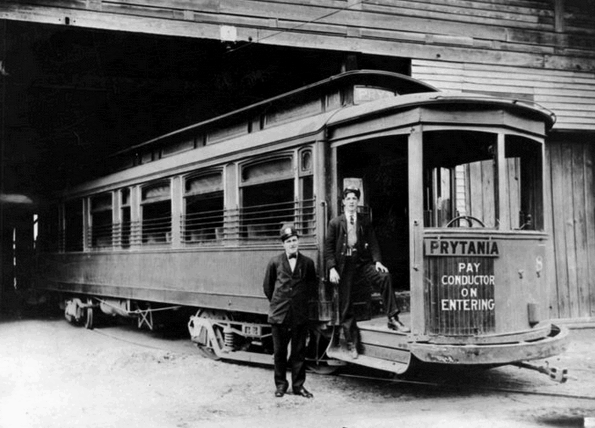|
Today in New Orleans History |
|
|
April 21



 

To receive an update for each day in New Orleans
history, join our facebook page
- Today in New Orleans History
Dallas based Big Scoop "Old Fashioned" ice cream stores were advertised as franchises in 1968 -- enticing buyers
with the prospect of earning up to $26,000 per year.
The New Orleans City Railroad Company was chartered on June 15, 1860. By 1861, twenty-six miles of horse railroad track
had been laid. Service began on the Camp and Prytania Line on June 8, 1861. Streets of the original route included Canal,
Camp, Prytania, Toledano, Poeyfarre, and Magazine. The Prytania Streetcar began operation on as a mule-drawn car line.
It was called the "Silk Stocking" line because its route included the streets of the tony Garden District.
Various route changes and consolidations took place over the years. Railway companys experimented with several potential
substitutes for horsecars. The ammonia motor was tried on several lines, including the Prytania, but was considered to
be impractical. By the 1890s all lines were electrified -- the Prytania Streetcar Line on September 15, 1894. Uptown residents
could easily ride to Canal Street in the speedy and comfortable streetcars until October 1, 1932 when the line was discontinued.
The Prytania Streetcar Line was serviced almost exclusively by the "Prytanias,"
a luxurious class of electric cars just as distinctive as the elegant "Garden District" neighborhood. Fifty cars
were ordered on April 21, 1910 from the St. Louis Car Company. The exteriors were painted yellow and orange and their
numbers ran from 355 to 404. Mahogany interiors surrounded patrons seated in St. Louis rattan seats. They looked out
of Robertson windows that slid conveniently into side panels when open. The "Prytania" cars were designed for
double-end operation and the prepayment of fares, the first of its type in New Orleans. The 800 model cars replaced the Prytanias on September 16, 1923. The Prytanias were then shifted to lighter
traffic routes. A public's changing preference for private transportation made streetcar operation unprofitable.
According to a New Orleans Public Service Inc. newspaper announcement, the Prytania Streetcar Line discontinued operations
on October 1, 1932 and the Nashville Bus Line began service over a part of the territory formerly served by the line. Prytania
Street, itself, was not included. Remaining Prytanias were scrapped that same year. The
Prytania streetcar barn was located on Prytania Street between Robert, Pitt, and Upperline. After the city acquired
the property, a 1936 ordinance dedicated it for "public purposes". The location is now a shopping center,
fronting Prytania, with a CVC pharmacy (4901 Prytania) as its anchor. Main Source: http://neworleanshistorical.org/items/show/540#.Ukfi9X9dy8A
|
|
|

To receive an update for each day in New Orleans history,
join our facebook page - Today in New
Orleans History.
Analytics |
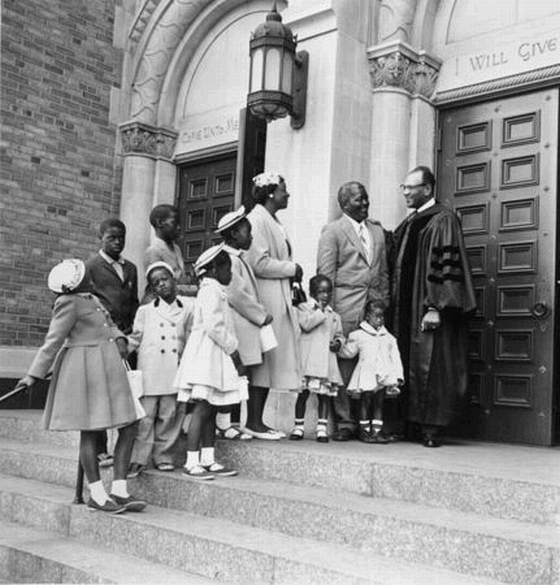
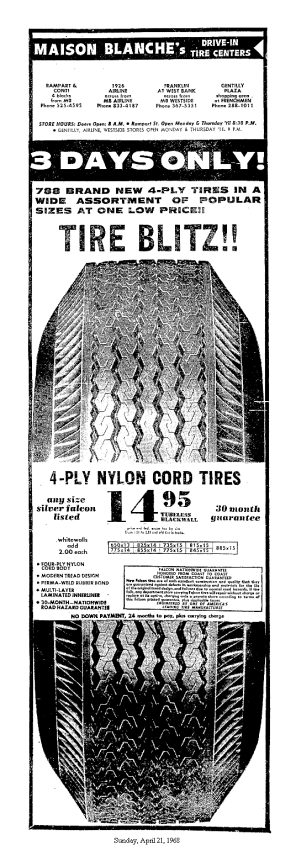 Maison Blanche offered tires for sale at only $14.95 when this April 21, 1968 advertisement (on the left) was run in the Times-Picayune.
MB Drive-In Tire Centers where then located on Rampart Street at Conti, 1926 Airline Highway, Franklin Street at the West
Bank Expressway, and at Gentilly Plaza Shopping Center.
Maison Blanche offered tires for sale at only $14.95 when this April 21, 1968 advertisement (on the left) was run in the Times-Picayune.
MB Drive-In Tire Centers where then located on Rampart Street at Conti, 1926 Airline Highway, Franklin Street at the West
Bank Expressway, and at Gentilly Plaza Shopping Center.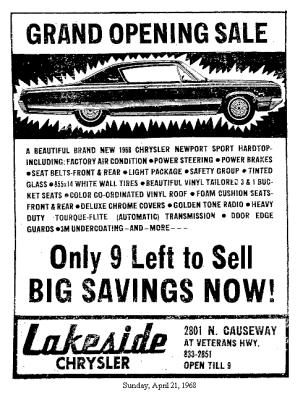 April 21, 1968 advertisement for the grand opening sale at Lakeside Chrysler (right) located at 2801 Causeway Boulevard at
Veterans Highway in Metairie offering a brand new Chrysler Newport Sport Hardtop with factory air-conditioning, power steering
and brakes, seat belts in front and rear (before their use was mandatory), tinted glass white wall tires, vinyl interior with
bucket seats, vinyl roof, radio, and undercoating.
April 21, 1968 advertisement for the grand opening sale at Lakeside Chrysler (right) located at 2801 Causeway Boulevard at
Veterans Highway in Metairie offering a brand new Chrysler Newport Sport Hardtop with factory air-conditioning, power steering
and brakes, seat belts in front and rear (before their use was mandatory), tinted glass white wall tires, vinyl interior with
bucket seats, vinyl roof, radio, and undercoating.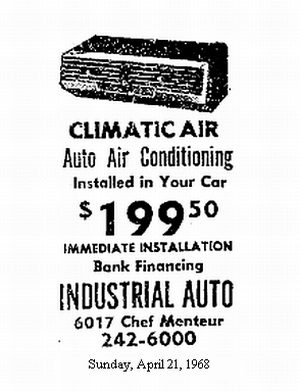 An air-conditioning option was available for older cars, back in 1968, via a Climatic Air Auto Air Conditioner (left) -- complete
with "immediate installing and bank financing for a hefty $199.50 from Industrial Auto at 6017 Chef Highway,
An air-conditioning option was available for older cars, back in 1968, via a Climatic Air Auto Air Conditioner (left) -- complete
with "immediate installing and bank financing for a hefty $199.50 from Industrial Auto at 6017 Chef Highway,